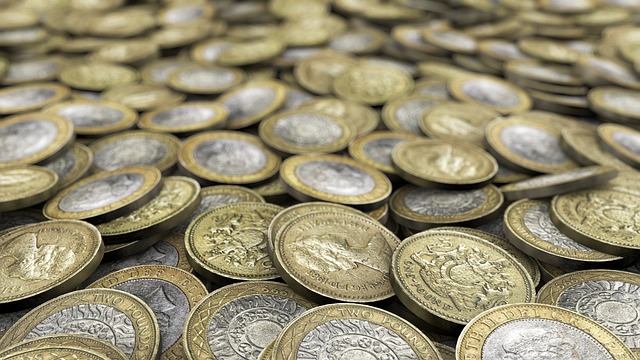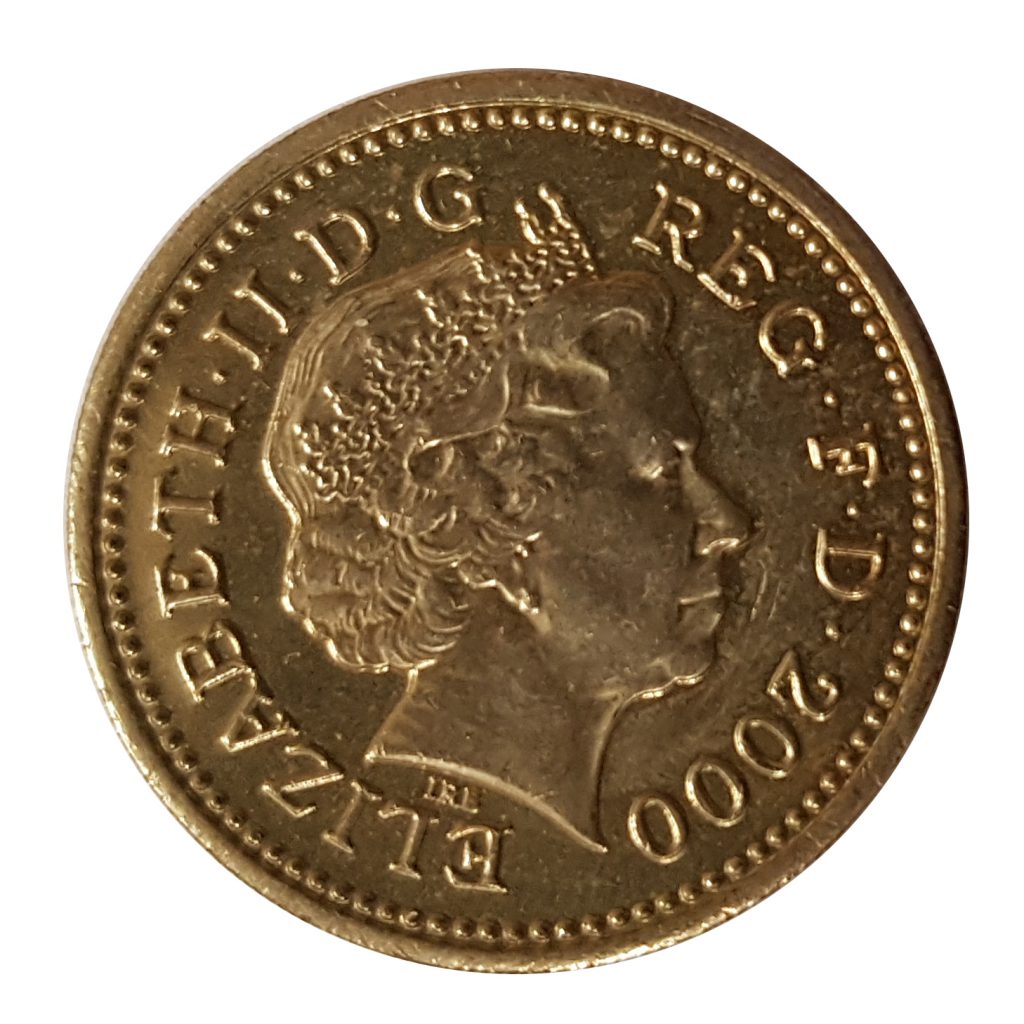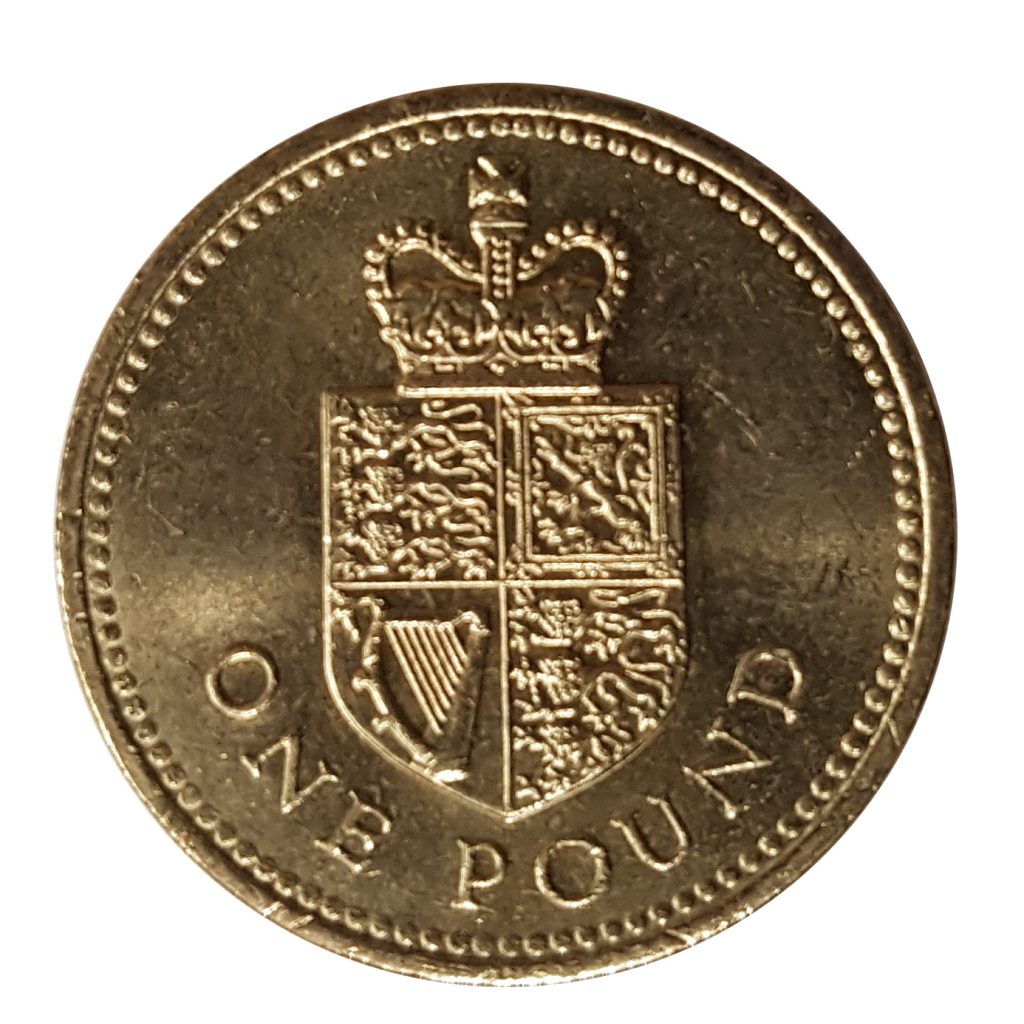
by Les Kendall
The Pound is the main currency of the UK and the one pound (GBP £1 sterling) coin is in everyday circulation. The one pound coin replaced the previous one pound banknote in April 1983 and the round one pound coin itself was replaced with a 12-sided, bi-metallic coin in 2017.
History
By the 1980’s, the spending power of one pound in the UK had diminished sufficiently for the Government to decide that a pound coin was more suitable than a pound note. Coins last more than 50 times as long as banknotes and a one pound note that only lasts (on average) 9 months was cost inefficient.
It was decided to launch a one-pound coin on 21 April 1983. The coin replaced the Bank of England one pound banknote, which had been around in various forms since 1797. The one pound note ceased production at the end of 1984 and was removed from circulation on 11 March 1988, though still redeemable at the Bank’s offices, like all English banknotes.
One-pound notes continue to be issued in Jersey, Guernsey, Isle of Man, and by the Royal Bank of Scotland, but the pound coin is much more widely used.
The size and composition of the coin was very much guided by cost. The round one pound coin was made in Nickel-brass (70% Cu, 24.5% Zn, and 5.5% Ni). It had a diameter of 22.5 mm, thickness of 3.15 mm and weighs 9.5 g.
The coin was slightly thicker than the coins already in circulation, and the colour had a yellow tint. Although there was an initial objection to the replacement of the popular pound note, and that the new coin looked a bit like ‘toy money’, the one pound coin soon become accepted, and then popular with the British people.
Most years have seen a commemorative variant as silver, piedfort silver, gold and sometimes platinum.
Obverse
The one pound coin has featured the profile of Queen Elizabeth II since the coin’s introduction on 21 April 1983. Four different portraits of the Queen have been used:
- 1983-1984 by Arnold Machin
- 1985-1997 by Raphael Maklouf
- 1998-2015 by Ian Rank-Broadley
- 2015 to date by Jody Clark

Around the portrait of the Queen is the inscription of Elizabeth II and some Latin abbreviations of DG REX FD which translates as “Dei Gratia Regina” meaning, “By the grace of God, Queen” and FD meaning “Defender of the Faith.”
Reverse
There has been many variations of Reverse design, although there has been a trend of issuing a standard reverse and then some representation of the countries of the United Kingdom: England, Scotland, Wales and Northern Ireland. Sometimes 2 or 3 variants have been issued in the same year.
1988 One Pound ReverseThe last current standard reverse, featuring the Royal Shield, was introduced in 2008.
For more details and images see our knowledge base article on the One Pound Coin.
Edge Inscriptions
Most one pound coins have an edge inscription, although sometimes this has been replaced with incuse patterns. The common incriptions are:
| Edge Inscription | Translation/etymology |
| DECUS ET TUTAMEN | ‘An ornament and a safeguard’ from Virgil’s Aeneid |
| NEMO ME IMPUNE LACESSIT | ‘No one provokes me with impunity’. The Motto of the Order of the Thistle |
| PLEIDIOL WYF I’M GWLAD | ‘True am I to my country’ from the Welsh National Anthem |
| PRO TANTO QUID RETRIBUAMUS | ‘What shall we give in return for so much.’ The Motto of Belfast |
| DOMINE DIRIGE NOS | ‘Lord direct us.’ The Motto of London |
| Y DDRAIG GOCH DDYRY CYCHWYN | ‘The Red Dragon shall lead’ The Motto of Cardiff |
| NISI DOMINUS FRUSTRA | ‘It is vain without the Lord’ The Motto of Edinburgh |
Counterfeit Problems
At 31 March 2016 it was estimated that there were 1,671,328,000 pound coins in circulation. The Royal Mint estimated in 2014 that 3.04% (about 47 million) were counterfeit and mainly because of this it was decided to change the design of the coin itself. Note that even some of the uncirculated coins have been counterfeited so this is still a problem for collectors.
New 12-Sided, Bi-Metallic One Pound Coin
The final round coins were minted in December 2015. Their replacement, a new 12-sided design, was introduced from 28 March 2017 onwards. It is of a similar 12-sided shape to the pre-decimal brass threepence coin, is roughly the same size as the current £1 coin and is bimetallic like the current £2 coin.
The new design is intended to make counterfeiting more difficult, via an undisclosed hidden security feature, called ‘iSIS’ (Integrated Secure Identification Systems).

To reach the initial production of 1.5 billion pound coins to replace the existing coins, the Royal Mint used ten presses 24×7 and made 140,000 coins per hour. It takes a long time to restock the entire country and that’s why the new coins are dated 2016 and 2017 despite not being legal tender until March 2017.
The old round one pound coin ceased to be legal tender on 15 October 2017.








